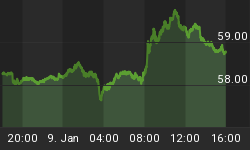In the bleak midwinter,
Frosty wind made moan,
Earth stood hard as iron,
Water like a stone...
(From "A Christmas Carol" by Christina Rossetti)
Shawn Colvin sings a beautiful song based on this poem by Christina Rossetti, reminding us of the bleakness of midwinter. That is exactly where the housing market seems to be now - facing its very own bleak midwinter of falling prices, rising mortgage rates and growing inventories.
The latest report of the S&P/Case-Shiller home price index shows that the price of houses fell 6.7% in October, year over year. That is the largest year-to-year decline drop since April 1991. Think of it - if you had bought a home for $300,000 in October 2006, it is now worth about $280,000. And suppose you just got a new job and need to move? You are going to have trouble selling it at that price, too, thanks to so many foreclosed homes on the market. One realtor in Phoenix explained to a Wall Street Journal reporter that local residents are now competing with foreclosed homes selling for $50,000 to $100,000 less than other houses on the market. "The sellers now are having to reduce their prices by 20% to 30% to compete," she says. (Wall Street Journal, "Pace of Decline in Home Prices Sets a Record," 12/27/07)
At a meeting of the New York Society of Security Analysts on January 7, U.S. Treasury Secretary Hank Paulson said this about the U.S. economy: "We will likely have further indications of slower growth in the weeks and months ahead."
Paulson and central bankers at the U.S. Federal Reserve recognize that they, too, face their own bleak financial midwinter. It's not just the mayhem brought on by the subprime mortgage debacle, the implosion of the housing market and the ensuing credit crunch; nor is it that the U.S. economy lurches toward a recession and hard times.
No, it is something bigger than that. Public opinion or social mood, as we call it here at Elliott Wave International, has shifted from positive to negative. When that happens, financial heroes find themselves falling from their pedestals onto frozen earth hard as iron.
Exhibit A - The headline of a recent article on Bloomberg: "Paulson Gets Diminishing Return with Bush, Like Powell, O'Neill" and the lead: "Henry Paulson escaped the Nixon White House with his reputation enhanced. He won't be so lucky this time around."
Exhibit B - The lead from a recent column by David Ignatius in the Washington Post:
"When airport rescue crews are worried that a damaged plane may have a crash landing, they sometimes spread the runway with foam to reduce the probability of fire on impact. That's what the Federal Reserve and other central banks are doing in pumping liquidity into severely damaged financial markets. Make no mistake: The central bankers' announcement Wednesday of a new coordinated effort to pump cash into the global financial system is a sign of their nervousness...."
Nervousness is in the air now. Investors are anxious about the markets; everyone is worried about the housing market. Our Elliott Wave Financial Forecast December issue explains how housing starts (and stops) are intimately tied to recessions: "One key indicator of success in pre-dating economic downturns is housing starts, which are approaching the 1-million-a-month level that has preceded all recessions of the last 40 years."
And the Fed is nervous, too. So much so that it announced a credit giveaway with four other major central banks (the Bank of Canada, the Bank of England, the European Central Bank and the Swiss National Bank) in mid-December to try to bolster the financial system and the banks that keep it humming. The Fed reports that banks have been stepping up to its auction window each week to purchase $20 billion. Unfortunately for the banks, most of this "liquidity" isn't that liquid. It has to be paid back within 30 days, with interest of about 4.65%.
Editor's note: Elliott Wave International has agreed to make available to our readers a 2-1/2-page excerpt from Bob Prechter's Elliott Wave Theorist in which he describes exactly how the Fed's latest effort to shore up banks' balance sheets has become "High Noon for the Fed's Credibility." Click here to read the Theorist excerpt.
Just how bleak is the future for central bankers if this recently implemented plan doesn't work? Bob Prechter explains in his just-published Theorist:
"Nevertheless, this is probably the single most important central-bank pronouncement yet. But it is not significant for the reasons people think. By far most people take such pronouncements at face value, presume that what the authorities promise will happen and reason from there. But the tremendous significance of this seismic engagement of the monetary jawbone is that if this announcement fails to restore confidence, central bankers' credibility will evaporate."
"At least that's the way historians will play it. But of course, the true causality, as elucidated by socionomics, is that an evaporation of confidence will make the central bankers' plans fail. The outcome is predicated on psychology."
The "socionomics" Prechter refers to is a new social science he has introduced that studies how humans behave in groups within contexts of uncertainty - where fluctuations in social mood motivate social actions. It explains that rather than an event happening that affects social mood (for example, falling home prices make people feel bad), what really happens is that social mood changes first from positive to negative and then lousy things happen (for example, unhappy people make home prices fall). If you can adopt this point of view, then you can see that, in poetic terms, we are fast approaching a bleak midwinter for the economy and the financial markets.















